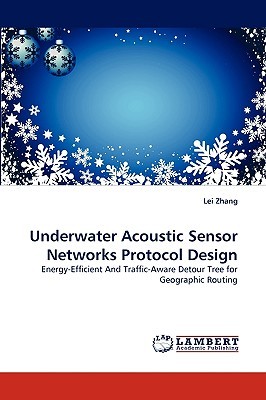
- We will send in 10–14 business days.
- Author: Lei Zhang
- Publisher: LAP Lambert Academic Publishing
- ISBN-10: 3838386086
- ISBN-13: 9783838386089
- Format: 15.2 x 22.9 x 0.8 cm, minkšti viršeliai
- Language: English
- SAVE -10% with code: EXTRA
Reviews
Description
The limited bandwidth and power resources as well as the 3-D topology in underwater acoustic sensor networks have made the geographic routing a favorite choice. While most of the detour strategies in the existing geographic routing do not work well for underwater sensor networks, the spanning tree routing detour strategy can efficiently find a detour for a packet when greedy forwarding fails. In this research, we propose novel spanning trees, namely Traffic-Aware Routing Tree (TART) and Energy-Aware Routing Tree (EART), which are constructed completely in a bottom-up fashion with the traffic load and residual energy level in mind.Simulation results show that those spanning trees have very few conflicting hulls, result in much higher path throughput and residual energy level when compared against other spanning trees, leading to a better routing performance in a 3-D underwater acoustic sensor network.
EXTRA 10 % discount with code: EXTRA
The promotion ends in 21d.05:29:57
The discount code is valid when purchasing from 10 €. Discounts do not stack.
- Author: Lei Zhang
- Publisher: LAP Lambert Academic Publishing
- ISBN-10: 3838386086
- ISBN-13: 9783838386089
- Format: 15.2 x 22.9 x 0.8 cm, minkšti viršeliai
- Language: English English
The limited bandwidth and power resources as well as the 3-D topology in underwater acoustic sensor networks have made the geographic routing a favorite choice. While most of the detour strategies in the existing geographic routing do not work well for underwater sensor networks, the spanning tree routing detour strategy can efficiently find a detour for a packet when greedy forwarding fails. In this research, we propose novel spanning trees, namely Traffic-Aware Routing Tree (TART) and Energy-Aware Routing Tree (EART), which are constructed completely in a bottom-up fashion with the traffic load and residual energy level in mind.Simulation results show that those spanning trees have very few conflicting hulls, result in much higher path throughput and residual energy level when compared against other spanning trees, leading to a better routing performance in a 3-D underwater acoustic sensor network.


Reviews